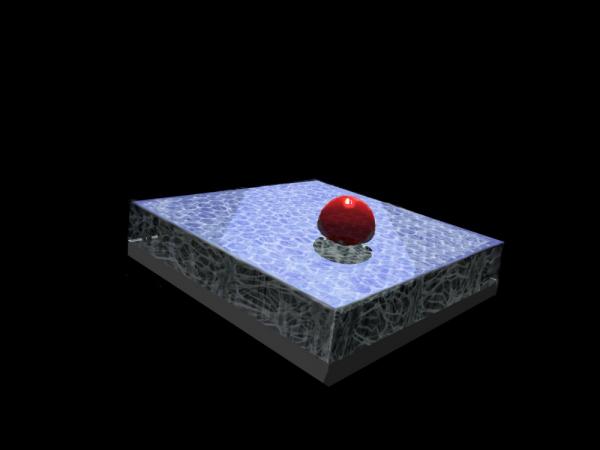BY LETTER
Omniphobic Materials
 Image from Steve Bowers | |
| An omniphobic layer consisting of a matrix of smart fibres infused with a non-volatile lubricant | |
Omniphobic materials are a class of materials that resist being fouled by all foreign substances that impinge upon their surface. Many materials have selective phobicity, such as resistance to being wetted by water or oils, but relatively few fundamentally unique material designs exist which are omniphobic.
The oldest omniphobic material design dates back to the Information Age, and is known as OELLS 1 (omniphobic entrained liquid lubricant surface) . An OELLS design utilizes a tailored microfibrous layer to entrain and immobilize a liquid lubricant2. This liquid lubricant saturates the microfibrous layer and coats its outer surface. The liquid lubricant prevents potential contaminants from coming into contact and bonding with the solid material below. The OELLS design has the property of immediate self-healing against damage like cuts and abrasion; the design was inspired by natural, biological materials, an early example of biomimesis.
Very similar in operational principle to OELLS is the OUFELL (omniphobic utility fog-entrained liquid lubricant) design. Besides having many of the typical advantages of utility fogs, OUFELLs can vary their slipperyness by the extension of lubricant-phobic friction or geckotech spines, from the ends of foglet arms, to outside the lubricant. This ability is advantageous because it allows the OUFELL to grip objects without surrounding them with fog, and to provide a non-slip surface for floors when required for pedestrian locomotion. OUFELL can shunt contaminants to a concentrated collection point, such as a suction hose, via surface tilting or peristaltic waves.
Transapient-tech transfer planes also fall into the category of omniphobic materials, with the ability to vary their coefficient of friction via a mysterious mechanism.
[2] Typically a compound that is virtually chemically inert, is liquid across a wide temperature range, and has an ultra-low vapor pressure; perfluoropolyether oils are common in this application.
Related Articles
Appears in Topics
Development Notes
Text by Johnny Yesterday
Initially published on 27 October 2015.
Page modified with links June 2022
Initially published on 27 October 2015.
Page modified with links June 2022
Additional Information






